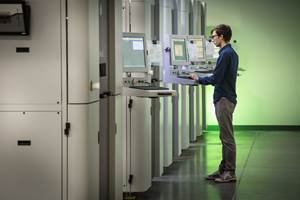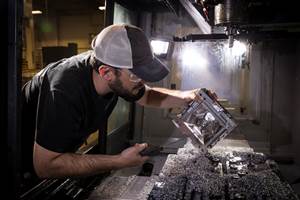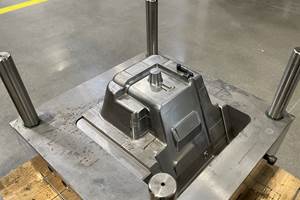UC Berkeley Creates 3D-Printed Cap That Checks Food Safety
The proposed “smart cap” features 3D-printed plastic with embedded sensors to measure the freshness of liquid food.
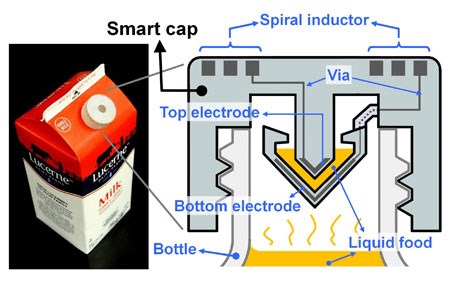
The proposed “smart cap” features 3D-printed plastic with embedded sensors to measure the freshness of liquid food.
How many times have you thrown away a food item because the “sell by” date has passed? You're not alone. Those confusing labels oftentimes fail to tell us anything about the safety of food. Food waste isn’t some small problem either—the U.S. throws away about $165 billion worth of food each year. But new technology from UC Berkeley engineers may assist with this issue.
UC Berkeley engineers, in collaboration with Taiwan’s National Chiao Tung University, have been working on developing 3D printing technology that also includes include electrical components, such as resistors, inductors, capacitors and integrated wireless electrical sensing systems. Their latest innovation is to print a wireless “smart cap” for a milk carton that detects signs of spoilage using embedded sensors, according to a news report from the university.
“Our paper describes the first demonstration of 3D printing for working basic electrical components, as well as a working wireless sensor,” said senior author Liwei Lin, a professor of mechanical engineering and co-director of the Berkeley Sensor and Actuator Center. “One day, people may simply download 3D printing files from the Internet with customized shapes and colors and print out useful devices at home.”
We know how much polymers are used for 3D printing, however, when it comes to conductors of electricity, the material can be a poor candidate. So the researchers produced a system that used both polymers and wax to still take advantage of 3D printing to produce an object. After the print was completed, the researchers removed the wax, leaving hollow tubes into which liquid metal – silver – was injection and cured. They produced various electronic components using this method.
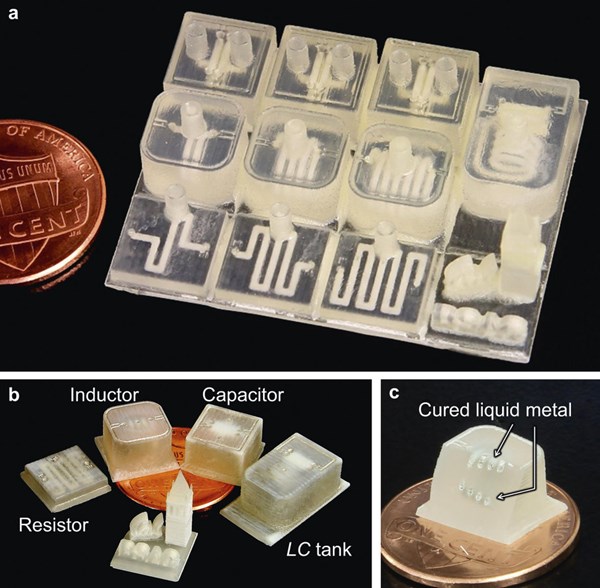
The UC Berkeley engineers created a variety of 3D-printed electronic components including resistors, inductors and capacitors.
The researchers then integrated the electronic components into a plastic milk carton cap to monitor signs of spoilage. According to the university, the “smart cap” was fitted with a capacitor and an inductor to form a resonant circuit. A quick flip of the carton allowed a bit of milk to get trapped in the cap’s capacitor gap, and the entire carton was then left unopened at room temperature (about 71.6 degrees Fahrenheit) for 36 hours.
The circuit could detect the changes in electrical signals that accompany increased levels of bacteria. Those changes were detected wirelessly using the smart cap, which found that the peak vibration frequency of the room temperature milk dropped by 4.3% after 36 hours.
“This 3D-printing technology could eventually make electronic circuits cheap enough to be added to packaging to provide food safety alerts for consumers,” Lin said. “You could imagine a scenario where you can use your cellphone to check the freshness of food while it’s still on the store shelves.”
Lin said his lab is working on developing this technology for health applications.
The findings are published in a new open-access journal in the Nature Publishing Group called Microsystems & Nanoengineering.
Related Content
Custom Molder Manages Growth on Several Fronts
Adding people, plants and machines, expanding capabilities in LSR, high-tonnage presses, automation and 3D printing—EVCO Plastics maintains momentum through challenging times.
Read MoreGetting into Plastics Additive Manufacturing? Avoid these Six Common Errors
There are a lot of 3D printing technologies out there, and it’s not uncommon for processors new to additive manufacturing to get tripped up. Here are some typical snafus, along with advice on how to avoid them before you start making parts.
Read MoreHow Additive Manufacturing Can Help, not Hinder, Injection Moldability of New Designs
Four cost drivers—design for moldability, mold-base size, internal componentry, polish/custom finishing—dictate the financial and processing success of a molded part design. Learn how 3D printing can assist this process, while also understanding its potential pitfalls.
Read MoreDaimler, OMIC Evaluate Wire-Fed DED for Moldmaking
3D printing a core and cavity on machine from Gefertec, followed by machining, allowed for a complete mold tool to be produced in three days.
Read MoreRead Next
Advanced Recycling: Beyond Pyrolysis
Consumer-product brand owners increasingly see advanced chemical recycling as a necessary complement to mechanical recycling if they are to meet ambitious goals for a circular economy in the next decade. Dozens of technology providers are developing new technologies to overcome the limitations of existing pyrolysis methods and to commercialize various alternative approaches to chemical recycling of plastics.
Read MorePeople 4.0 – How to Get Buy-In from Your Staff for Industry 4.0 Systems
Implementing a production monitoring system as the foundation of a ‘smart factory’ is about integrating people with new technology as much as it is about integrating machines and computers. Here are tips from a company that has gone through the process.
Read MoreHow Polymer Melts in Single-Screw Extruders
Understanding how polymer melts in a single-screw extruder could help you optimize your screw design to eliminate defect-causing solid polymer fragments.
Read More




















